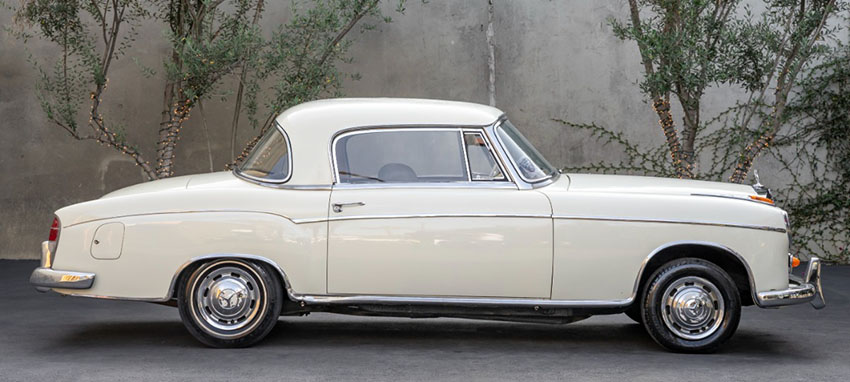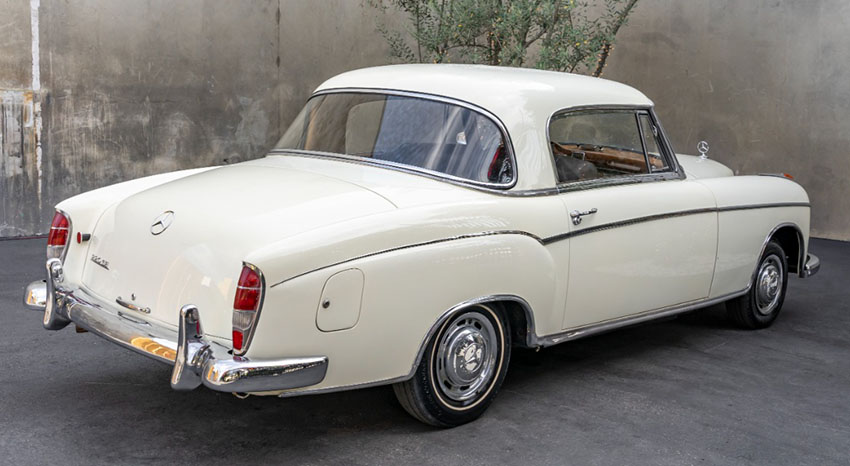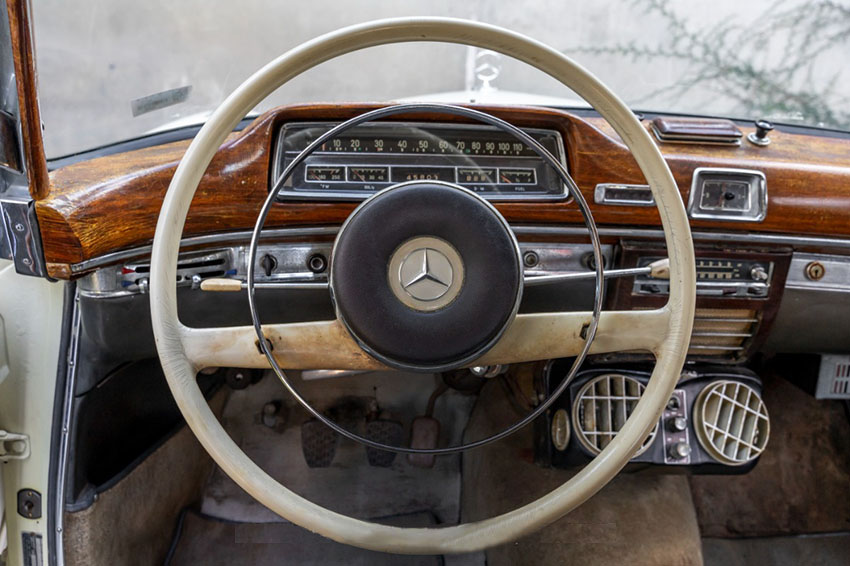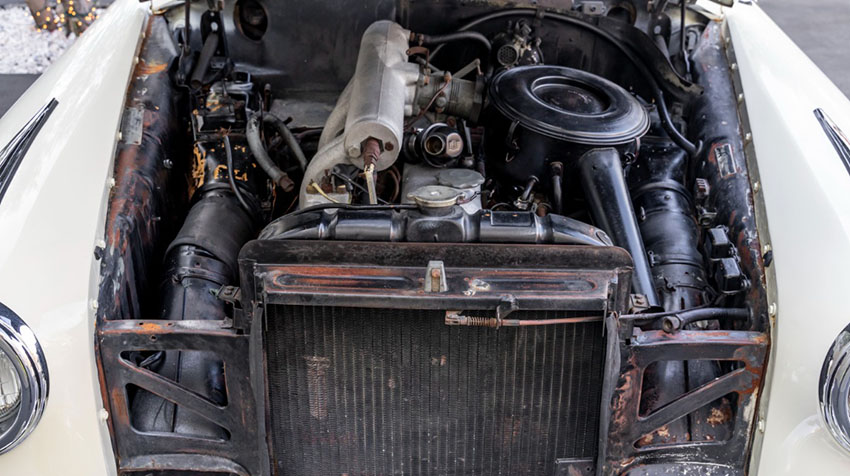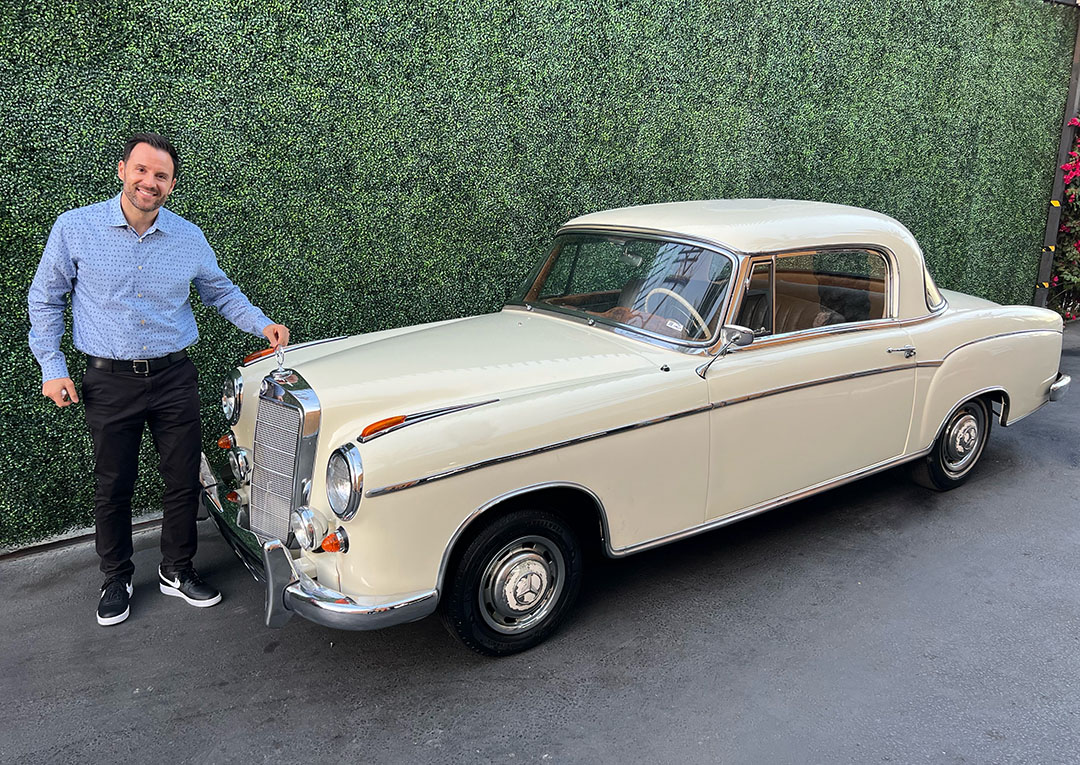Car Tales: Beauty Breeding, Mercedes-Benz 220 SE
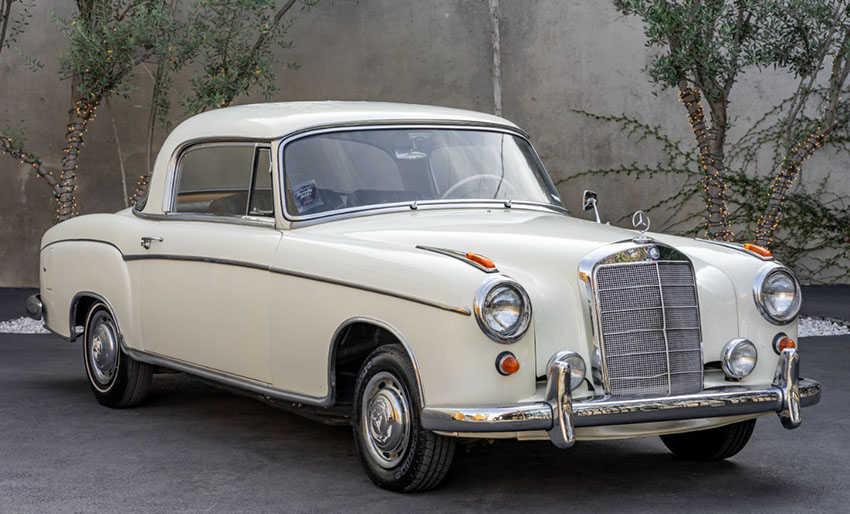
‘These lines from a Mercedes-Benz sales brochure of the time perfectly capture the powerful appeal and strength of what became known as the Mercedes-Benz ‘Ponton’ series.
‘Although discontinued by Mercedes-Benz in November 1960, partially because it was deemed the look had become somewhat out-of-date, that is now one of the most endearing features of the 220 SE model, its classic retro style transmogrifying it into the quintessence of antique cars.
‘Mercedes itself did not refer to any of its then range of cars using the ‘Ponton’ nickname, which is German for ‘Pontoon’, the Mercedes-Benz ‘Ponton’ series was first introduced in 1953, the manufacturer’s main production models, the company’s second line of cars since World War 2.
‘The styling unified the previously-articulated body elements, hood, fenders, runnings boards into a single design.
‘The Mercedes-Benz 220 SE was the most luxurious version in the Ponton series, available as a coupe, sedan, or cabriolet. It had a cylinder capacity of 2195cc, and was equipped with an aluminum cylinder head, an overhead camshaft and a Bosch mechanical fuel injection system.The interior of the cars came coated in wood and leather, with perhaps the coolest wood dash there has ever been. (Even available was matching leather luggage.)
‘We have one of these gorgeous cars, so lovely to drive, at Beverly Hills Car Club right now. Although, as I have said, Mercedes-Benz ended production of the 220 SE in November 1960, our car was not sold until the next year, and therefore is designated a 1961 model.
‘This 1961 (built in 1960) Mercedes-Benz 220 SE Coupe is finished in its factory color White Gray (158). It is equipped with a column-shifted manual transmission, single exhaust outlet, chrome grille, driver-side mirror, Hella fog lights, front bucket seats, rear bench, vent windows, chrome trim, locking glove compartment, sun visors, analog clock, Becker Mexico AM/FM radio, ivory color two-spoke steering wheel with a chrome horn ring, Mercedes-Benz branded hub caps, and a spare wheel. In addition to the equipment, this car comes with the owner’s manual booklet, technical booklet, service booklet with stamps, and manufacturer’s literature. It is a highly desirable fuel-injected 220 SE Ponton Coupe that has been sitting for some years and is currently not running but has a free turning motor.
‘This Mercedes-Benz Coupe 220 SE that we have is one of only 830 produced in the model years 1959 and 1960.
‘The design of the ‘Ponton’ was by Karl Wilfert, a key figure in the post-war development of European cars and the Vienna-born son of an architect, which you imagine was significant in Wilfert’s appreciation and understanding of design. Although Karl Wilfert’s masterpiece certainly was the now virtually priceless 300SL Gullwing, and later the iconic pagoda-topped 230 SL, the beautiful Ponton came very close.
‘In Mercedes’ design department from 1955 – previously he had worked for 22 years in the company’s Research department – he found himself as director of car body development from 1959, researching the improvement of safety for car occupants involved in accidents.
‘This was an extension of co-worker Bela Barenyi’s belief – revolutionary in its time and first arrived at and patented in 1937 – that, for maximum safety, a car should be divided into three sections: a central, rigid, non-deforming passenger compartment, and on both ends placing crumple zones – what became known as a ‘three-box design.’ These front and rear sections were to be designed to absorb the energy of an impact by deformation during any collision, thereby protecting occupants as much as feasible from the collision energy.
‘By having a strong deep platform to form a partial safety cell, 1953’s W120 ‘Ponton’ had to some extent implemented the concepts of crumple zones and the non-deformable passenger cell into its ‘three-box’ design. By the time of the arrival of the 220 SE the crumple zone had been further developed by Mercedes-Benz to be standard practice in the design and build of its cars.
‘Though it is hopefully not a circumstance in which you will ever need to test out the crumple zone, the Mercedes-Benz 200 SE had a 0-60 mph time of 11.6 seconds, a top speed of 96 mph, and a quarter mile drag time of 18.6 seconds.
‘But as a marvelous concept the crumple zone moved on life in quite a literal manner.
‘Safe driving!
-Alex Manos, Owner

Get Started!
Welcome!
join our inventory newsletter
Sign-up for our e-mail alerts
join our newsletter
Sign-up for our e-mail alerts
Learn More
or
we buy classic cars
Looking to sell yours?
Contact us
Sell us your car
Pick up from any USA location - Any condition - Top $$$ Paid




